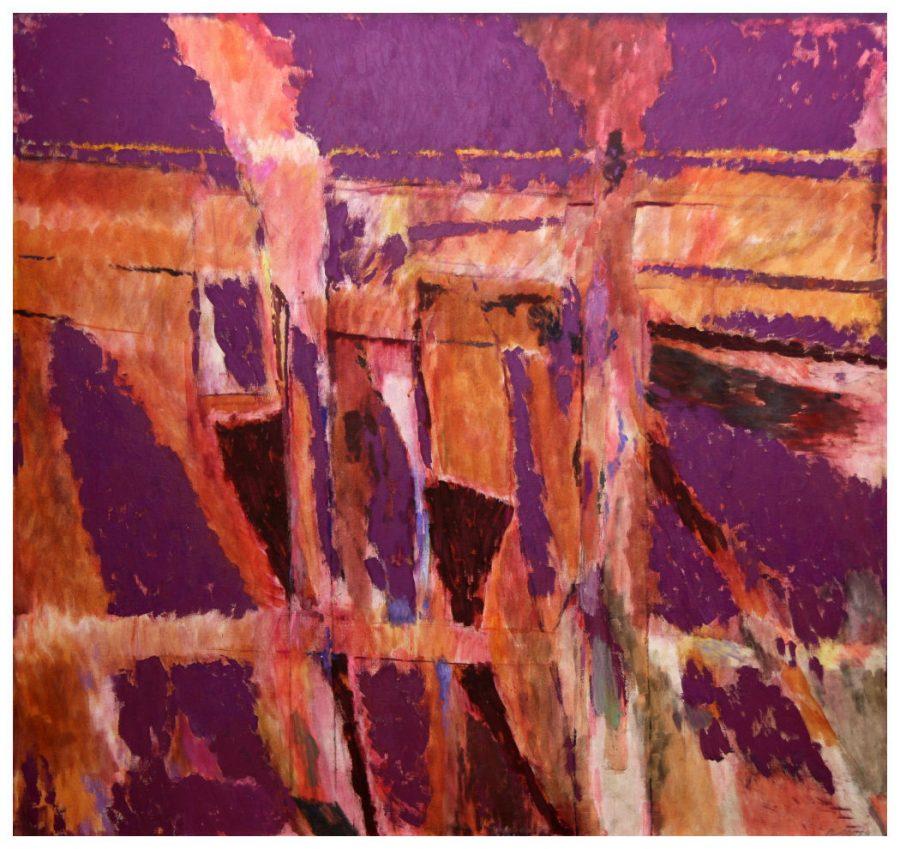‘Non-Objective’ opens at Mulvane Art Museum
January 21, 2016
“A non-objective work of art is one in which no actual objects are depicted,” states a press release from the new collection opening at Mulvane Art Museum.
The museum has made a new collection from the permanent Mulvane collection. The series reflects one theme –non-objective art– and has paintings from the 1950s and beyond. Specifically, the art captures three different types of non-objective art.
The first type includes artists like Eugene Bavinger and Arthur Osver. These artists fall into the category of American Abstract Expressionists. The curator, Julie Myers, writes in the press release, “they felt that the very act of painting thickly and actively with large, gestural brushstrokes could reveal human emotions and universal truths.”
Osver’s work “The Regal Hour” is filled with beautiful, heavy strokes of red, purple and gold. Its abstract shapes allow the audience to examine in its intent in their eye, but there is no mistaking the colors’ portraying of the essence of royalty.
Following the Expressionists were the Color Field painters. Artists in this portion of the collection include Douglas Martin and George Bogart. Following the philosophy of New York art critic Clement Greenburg, their paintings are more toned down compared to the American Abstract Expressionists. The colors used are cooler and the thick brushstrokes are abandoned to allow for Greenburg’s philosophy: “The purest expression of any art form existed when that medium was truest in its own nature.”
A notable piece in this part of the collection is George Bogart’s “Centerpiece,” which continues the theme of abstract shapes but is much more emotionally subtle compared to Osver’s work.
The final category of artwork in the collection is non-objective geometric illusionism. This artwork was very prominent in the 1960s and ’70s. They used different colors to create tricks to fool the mind. Timothy App’s “Constancy” uses light and dark colors to seem as though the white box extends away from the canvas. This is done by the darker colors creating a deeper look that makes the light jump toward the viewer.
The collection will be available to view from Jan. 15 through March 9, located on SW 17th and Jewell Street and connected to Garvey Fine Arts Center. Admission is free. There will also be a special reception for the collection held on Feb. 5 during Topeka’s First Friday Artwalk from 5:30 to 7:30 p.m.



